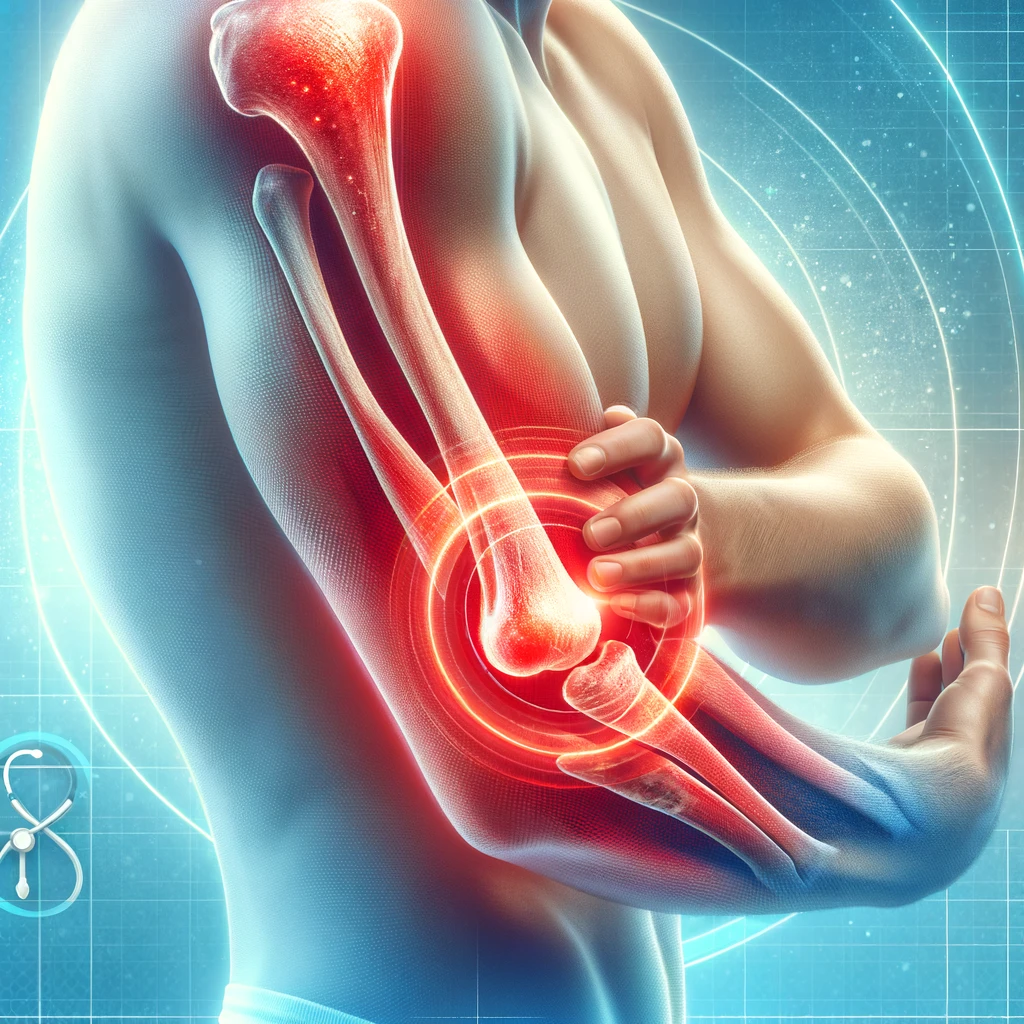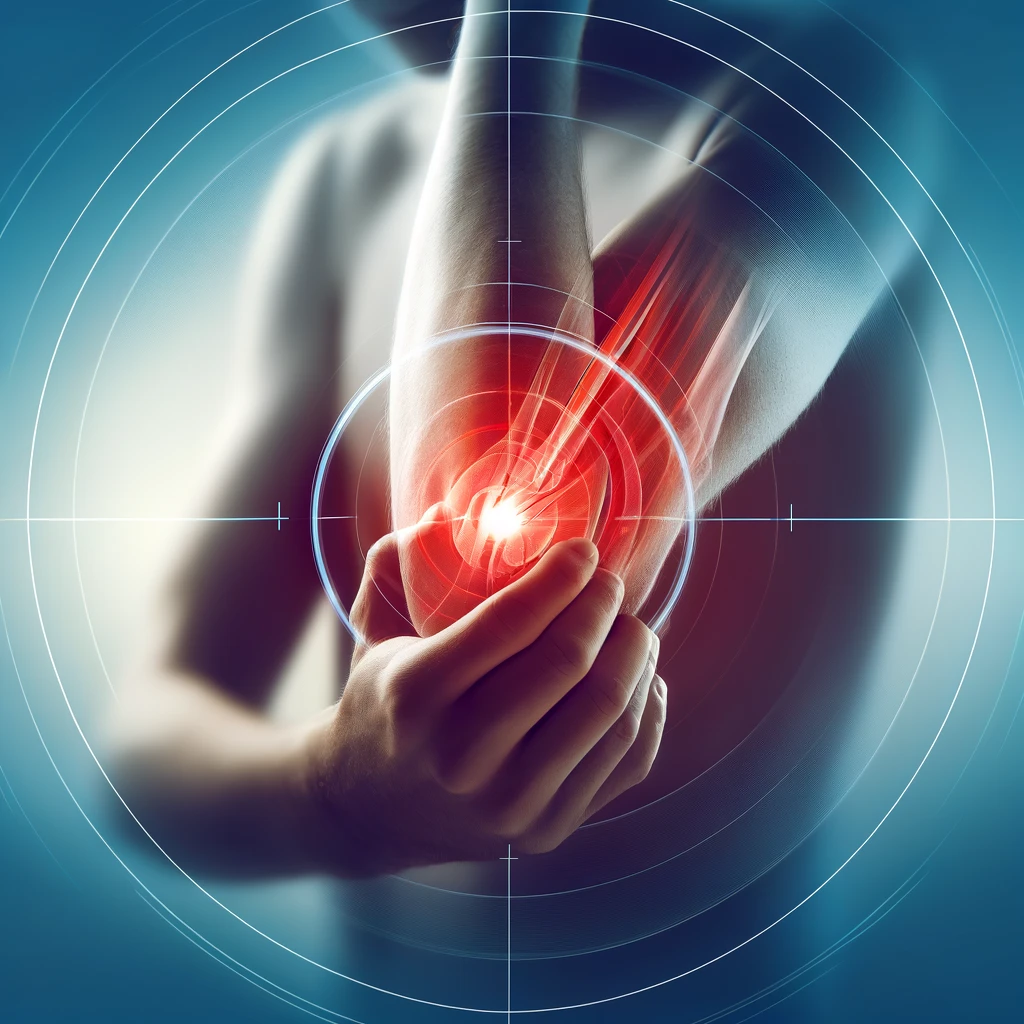
Table of Contents
Elbow pain can be a real bummer, right? Whether you’re an athlete, a weekend warrior or someone who uses their hands a lot at work, elbow pain can really throw a wrench in your daily activities. But don’t worry, understanding the causes of elbow pain is the first step to getting back on track.
Types of Elbow Pain
Acute vs. Chronic Elbow Pain
Elbow pain can be either acute or chronic. Acute pain usually happens suddenly due to an injury, like a fall or a sudden twist. Chronic pain, on the other hand, develops over time and is often due to repetitive movements or underlying conditions.
Pain Location and What It Indicates
The location of your elbow pain can give you a clue about what’s causing it. Pain on the outside of the elbow might indicate tennis elbow, while pain on the inside could be golfer’s elbow. Pain at the back of the elbow might be bursitis. Knowing where it hurts can help narrow down the cause.
Common Causes of Elbow Pain
Overuse Injuries
One of the most common causes of elbow pain is overuse. This can happen from repetitive motions, such as typing, playing certain sports, or manual labor. These activities can lead to conditions like tennis elbow or golfer’s elbow.
Trauma and Accidents
Trauma from falls, direct blows, or accidents can cause fractures, dislocations, or sprains, all of which can lead to elbow pain. These injuries usually result in acute pain and may require immediate medical attention.
Arthritis
Arthritis, including osteoarthritis and rheumatoid arthritis, can cause chronic elbow pain. This condition leads to inflammation of the joints, causing pain, stiffness and swelling.
Specific Conditions Causing Elbow Pain
Tennis Elbow
Causes
Tennis elbow, or lateral epicondylitis, is caused by overuse of the arm, forearm and hand muscles. Despite its name, you don’t have to play tennis to get it.
Symptoms
Symptoms include pain and tenderness on the outside of the elbow, weakened grip strength and pain that worsens with forearm activity.
Treatments
Treatments range from rest and ice to physical therapy and in severe cases, surgery.
Golfer’s Elbow
Causes
Golfer’s elbow, or medial epicondylitis, is caused by repetitive motions that involve gripping, rotating or flexing the wrist.
Symptoms
Symptoms include pain and tenderness on the inside of the elbow, stiffness and weakness in the hands and wrists.
Treatments
Rest, ice, anti-inflammatory medications, and physical therapy are common treatments. Severe cases might require surgical intervention.
Bursitis
Causes
Bursitis is the inflammation of the bursae, small sacs of fluid that cushion the bones, tendons and muscles near the joints. It can be caused by repetitive motion or prolonged pressure on the elbow.
Symptoms
Symptoms include pain, swelling, and warmth around the elbow joint.
Treatments
Treatment often involves rest, ice, and anti-inflammatory medications. In some cases, drainage of the bursa fluid may be necessary.
Cubital Tunnel Syndrome
Causes
Cubital tunnel syndrome occurs when the ulnar nerve, which runs along the inner side of the elbow, becomes compressed or irritated.
Symptoms
Symptoms include numbness and tingling in the ring and little fingers, pain in the elbow and weakness in the hand.
Treatments
Treatments include avoiding activities that aggravate the condition, wearing a brace, and in severe cases, surgery to relieve the pressure on the nerve.
Radial Tunnel Syndrome
Causes
Radial tunnel syndrome is caused by pressure on the radial nerve, which runs from the neck to the hand.
Symptoms
Symptoms include pain in the forearm and elbow, which worsens with activity.
Treatments
Treatment involves rest, anti-inflammatory medications, physical therapy, and sometimes surgery.
Less Common Causes of Elbow Pain
Gout
Gout is a form of arthritis caused by the buildup of uric acid crystals in the joints. It can cause sudden, severe pain, swelling and redness in the elbow.
Lupus
Lupus is an autoimmune disease that can cause inflammation and pain in various joints, including the elbow.
Infections
Infections in the elbow joint or the surrounding tissues can cause pain, swelling and redness. This is a serious condition that requires immediate medical attention.
Risk Factors
Occupational Hazards
Jobs that involve repetitive motion, heavy lifting or prolonged pressure on the elbows can increase the risk of developing elbow pain.
Sports Activities
Sports that require repetitive arm movements, like tennis, golf or baseball, can lead to overuse injuries and elbow pain.
Age and Genetics
As we age, our joints and tendons become more prone to wear and tear. Genetics can also play a role in conditions like arthritis.
Diagnosis of Elbow Pain
Clinical Examination
A healthcare provider will perform a physical examination, checking for pain, swelling and range of motion.
Imaging Techniques
X-ray
X-rays can help identify fractures, dislocations, and signs of arthritis.
MRI
MRI scans provide detailed images of soft tissues, helping diagnose conditions like tendonitis and ligament injuries.
Lab Tests
Blood tests can help diagnose underlying conditions like rheumatoid arthritis or gout.
Treatment Options
Conservative Treatments
Rest and Ice
Resting the elbow and applying ice can help reduce inflammation and pain.
Medications
Pain Relievers
Over-the-counter pain relievers like ibuprofen and acetaminophen can help manage elbow pain.
Anti-inflammatory Drugs
Nonsteroidal anti-inflammatory drugs (NSAIDs) can reduce inflammation and pain in the elbow joint.
Physical Therapy
A physical therapist can develop a personalized exercise program to strengthen the muscles around the elbow, improve flexibility, and reduce pain.
Surgical Options
In severe cases, surgery may be necessary to repair damaged tissues or relieve nerve compression.
Preventive Measures
Ergonomic Adjustments
Making ergonomic adjustments at work and during activities can help prevent elbow pain. This includes using proper posture and equipment.
Proper Technique in Activities
Learning and using the proper technique in sports and activities can reduce the risk of overuse injuries.
Regular Exercise and Stretching
Regular exercises to strengthen and stretch the muscles around the elbow can help prevent pain and injuries.
Home Remedies for Elbow Pain
RICE Method
Rest, Ice, Compression, and Elevation (RICE) is a simple and effective way to manage minor elbow injuries.
Over-the-Counter Medications
Pain relievers and anti-inflammatory medications can help manage pain and reduce inflammation.
Herbal Remedies
Certain herbal remedies, like turmeric and ginger, have anti-inflammatory properties that can help reduce pain and swelling.
When to See a Doctor
Signs of Serious Conditions
If elbow pain is severe, persistent, or accompanied by swelling, numbness or a reduced range of motion, it is important to seek medical attention.
Persistent Pain and Disability
If home remedies and over-the-counter medications do not relieve the pain, or if the pain interferes with daily activities, it is time to see a doctor.
Living with Elbow Pain
Coping Strategies
Living with chronic elbow pain can be challenging. Finding effective coping strategies, such as gentle exercises, stress management techniques and support from friends and family, is essential.
Lifestyle Modifications
Making lifestyle modifications, such as avoiding activities that exacerbate the pain, using ergonomic tools and maintaining a healthy weight, can help manage elbow pain.
Expert Opinions
Insights from Orthopedic Specialists
Orthopedic specialists can provide valuable insights into the causes and treatments of elbow pain, as well as tips for prevention and management.
Tips from Physical Therapists
Physical therapists can offer advice on exercises and stretches to strengthen the muscles around the elbow and prevent pain.
Conclusion
Elbow pain can be managed effectively with the right approach. Understanding the causes, seeking appropriate treatment, and taking preventive measures can significantly reduce the impact of elbow pain on daily life.
FAQs
What are the first signs of elbow pain?
The first signs of elbow pain often include discomfort, tenderness and stiffness in the elbow joint, especially after repetitive use or injury.
Can elbow pain be a sign of something serious?
Yes, elbow pain can sometimes indicate a more serious condition like a fracture, infection, or nerve compression. It’s important to seek medical advice if the pain is severe or persistent.
How long does it take for elbow pain to heal?
The healing time for elbow pain depends on the cause and severity of the condition. Minor injuries may heal in a few weeks, while more serious conditions could take months.
Are there specific exercises to prevent elbow pain?
Yes, exercises that strengthen the forearm and wrist muscles, improve flexibility and enhance overall arm strength can help prevent elbow pain.
What should I avoid if I have elbow pain?
If you have elbow pain, avoid activities that strain the elbow, such as lifting heavy objects, repetitive motions and any movements that exacerbate the pain.



